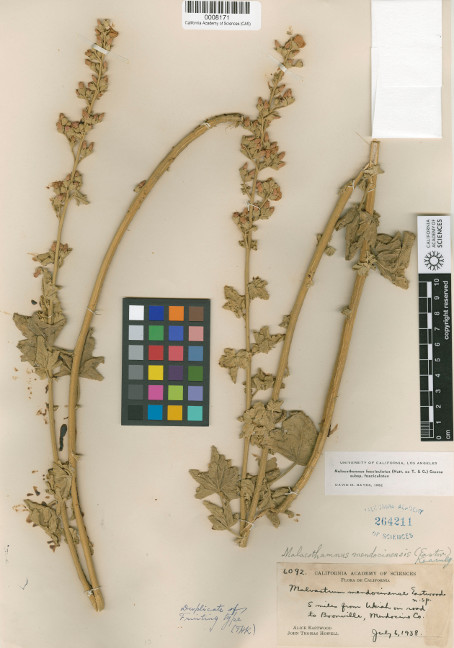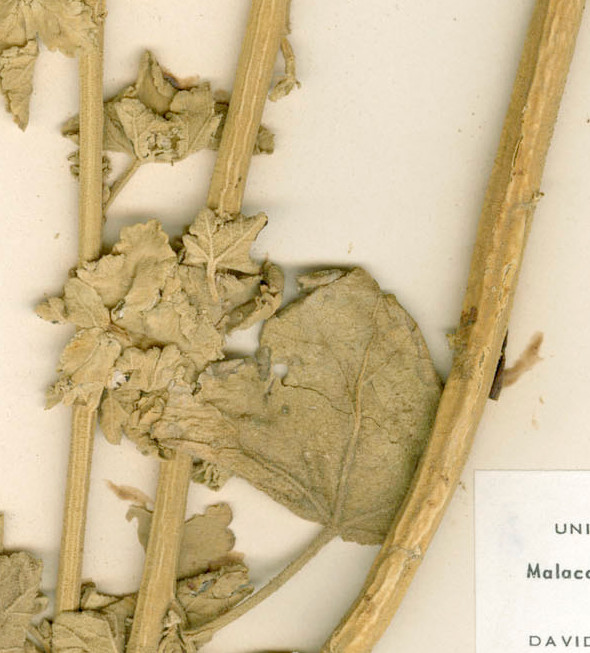Bush-mallow Challenge 1 - Mendocino bush-mallow
This is the first of several bush-mallow challenges I’ll be posting for this project. If you live in the Ukiah area or want to go on an adventure, here is some information to help you possibly find this species. Any observations of any bush-mallows from this area would be very useful information.
According to the California Native Plant Society, Mendocino bush-mallow (Malacothamnus mendocinensis) is confirmed from only two historic collections near Ukiah, CA, the last in 1939. It is currently presumed extinct, but bush-mallows are mostly fire-followers and there have been no fires near the type locality for a long time. There are some recent burns relatively nearby which may be worth searching though. The best time to find it in flower would likely be May through July based on the few existing specimens.
Below is a map (larger version here) which shows the presumed localities as a star and an asterisk. The red areas are recent burns and the best likely locations to search for the plants. Follow this link for an interactive fire map.

Below is a scan of one of the type specimens (larger version here).

This crop shows the “conspicuously angulate and striate stem” which is one of the key distinguishing features of this species.

See also my post here on what to focus on if you want to be able to ID a bush-mallow from photos.





Comments
Hi @keirmorse - was this described from herbarium specimens, or did the author see fresh plants?
I ask because (knowing nothing of Malacothamnus, and little of real botany) it seems almost like the angulate-striate stems could be artefacts of drying?
Does that seem possible or likely? Are there other features we can look for, or a longer description of the plant?
Lastly, what are the most likely taxa we would confuse for this species that occur in this area?
Thanks! I hope I can manage a day in early July to go look for it.
It could certainly be an artifact of drying, but it isn't evident in the other species specimens I've seen so far. I believe there are only 4 known specimens, so there isn't much to go on. The author collected most of the specimens, but she didn't note anything about the stems in the original description. It is most like M. hallii and could possibly be a northern form/variety of that. If someone finds some, that will allow for some analyses that might answer that question.
The closest known locations of any other bush-mallows are over 40 miles away to the east, so anything found in this area would still be a major find. The closest ones are all or mostly M. helleri which is currently lumped under M. fremontii. These have much longer hairs on the stem and calyx. Note that in the specimen above that the hairs are so short that you can't really even distinguish them.
i wonder if there's any street view imagery since the fires. Of course now that it's summer field and garden season, i'm a lot busier and less time for that.
I took a peek using Google along the road where it was originally found. Most of the likely areas that burned don't have good or any streetview imagery.
too bad. I mean ideally i'd have a teleporter and roam around in person but it's a bit far away :)
I've definitely seen M. fasciculatum occur in roadsides or other disturbed areas without apparent fire though so who knows
Yeah, fasciculatus in particular seems to come up after non-fire disturbance. I suspect this is more common with those taxa in areas that didn't burn as much historically like maybe the island and coastal populations. One thing interesting with some of the older populations I'm visiting is trying to figure out how long they have been around. Some definitely are reproducing by rhizomes, so maybe they can persist this way for a long time if not outcompeted.
huh, interesting. I am most familiar with the santa monicas though and those have plenty of fire history, not much lightning there of course but Native Americans have been around for well over 10,000 years. But still, yeah, interesting
Add a Comment